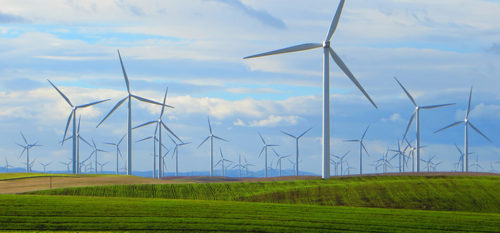California 2022–2023 Energy Budget
July 8, 2022
On June 30, 2022, Governor Gavin Newsom signed the $308 billion California budget for 2022-2023.
The budget invests a total of $8.1 billion one-time General Fund over five years to support California energy projects: $4.3 billion is currently allocated, and the remaining $3.8 billion will be allocated later this summer. Among the many specific programs it funds, the budget invests heavily in transportation-related programs. To advance the state’s transition to Zero Emissions Vehicles (“ZEV”), the budget allocates funds to advancing the feasibility and use of electric school buses, supporting low-income consumers in purchasing ZEVs through the Clean Cars 4 All Program, and assisting in implementing ZEV charging infrastructure programs that are federally funded. $13.8 billion is allocated over two years for the transition of the state’s active transportation networks; funding High-Speed Rail, and regional/local transit and rail projects; and climate adaptation projects for transportation related climate resiliency and risk reduction.
Of the allocated funds, the budget includes $1.2 billion to mitigate past-due residential electric utility bill balances, $2.2 billion for strategic energy reserve resources to be made available in instances where the electric grid is stressed, $550 million to incentivize the deployment of new zero- or low-emission technology at existing or new facilities, $200 million to support the development of demand-side grid support initiatives, and $140 million for long-duration storage projects throughout the state, providing a decarbonized resiliency resource to complement intermittent renewables. Within these allocations, $970 million will go to the California Public Utilities Commission specifically for it to provide residential solar programs and storage system incentives; $670 million of that amount is reserved for low-income households. In addition, $45 million will create the Offshore Wind Energy Deployment Facility Improvement Programs, which will assist and invest in activities that advance offshore wind energy development in federal waters. The budget also funds the Department of Water Resources’ enhancement of pumped hydroelectric storage at the Lake Oroville Dam.
The budget additionally allocates $1.3 billion to its Greenhouse Gas Reduction Fund, which includes the ZEV transition budget items above, along with $300 million in 2022–2023 for the Community Air Protection Program, which reduces emissions in communities with disproportionate exposure to air pollution. $120 million of the Greenhouse Gas Reduction Fund creates the Climate Ready Program that looks at nature-based projects to address sea level rise, and $100 million will expand the number of satellites launched for methane observations, which enhance enforcement capabilities by identifying the source of the emissions.
Other natural resources addressed by the Energy Package are lithium, and oil and gas wells. With regard to lithium, the budget creates a lithium extraction tax per ton of lithium. The tax will begin on January 1, 2023. 80% of proceeds will go to local governments, while 20% will go to Salton Sea restoration efforts and community benefit projects. With regard to oil and gas , the budget provides funding for decommissioning oil and gas facilities, remediation, and helping the displaced workforce through financial stipends and restarting the California Workforce Development Board’s Low Carb Economy Workforce grant program.

